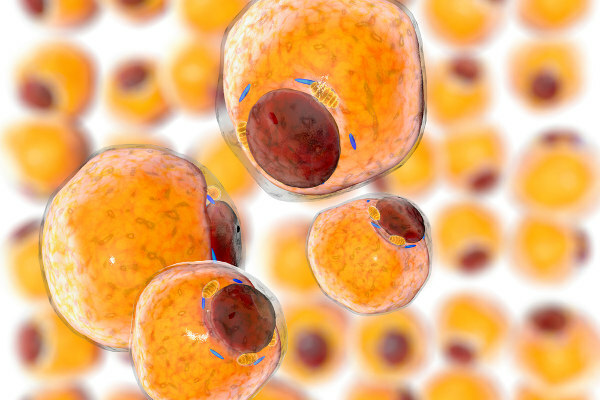The vegetation in Brazil comprises the various manifestations of vegetation formations existing in the country and which arise according to the type of climate and relief.
Divided into forest and grassland groups, forest vegetation types occupy about 60% of the Brazilian territory, while the remaining area is rural.
The forest group comprises Atlantic Forest, Araucaria Forest, Cocai Forest, Amazon and Mangrove. Meanwhile, the rural group consists of cerrado, caatinga, pampa and wetland.
Types of vegetation in Brazil
Amazon rainforest
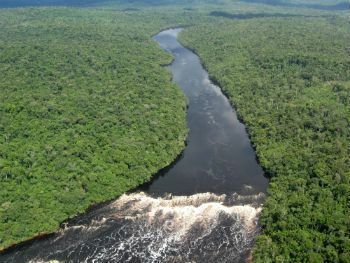
THE Amazon rainforest It has an equatorial climate, hot and humid, which allows the existence of a wide variety of plant species such as chestnut, vine, guarana, Jatobá, palm, rubber and water lily.
The vegetation is basically divided into floodplain forest, igapó forest and terra firme forest. It is the Brazilian vegetation most affected by deforestation.
The Amazon covers the entire North region, as well as parts of the states of Mato Grosso and Maranhão and some countries bordering Brazil.
Atlantic forest

THE Atlantic forest it is formed by ombrophilous and seasonal forests. The landscape is a dense and closed forest, marked by the presence of large and medium-sized trees.
It is still possible to find native vegetation in 8% of its area. Plant species include cedar, imbaúba, ipe, jambo, palm tree, pau-brasil and peroba.
Located mainly on the coast of Brazil, the climate of the Atlantic Forest is tropical hot and humid. It is this climate and the rains that provide its great biodiversity, the largest in the world considering each hectare.
thick
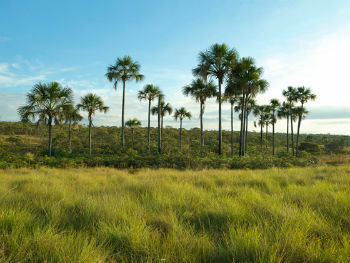
The type of vegetation present in the area of thick it is characterized by seasonal tropical climate, in which winter is dry and summer rains.
The vegetation is very diverse due to its extension, and dense fields and forests can be observed. In it, you can find shrubs, gnarled trees and grasses.
The cerrado predominates in the central region of Brazil and presents a dry aspect, such as the savannas found mainly in Africa.
Caatinga

THE Caatinga it occupies the northeastern hinterland, where the climate is semi-arid and there is little rain. As a result of this, plants appear in it that remain with little water, which are called xerophytes.
Other plant characteristics are thick bark, thorns, small leaves and tuberous roots. In general, we can observe small vegetation, such as shrubs and cacti.
Plants such as facheiro and mandacaru also appear, but in favor of humidity, trees such as aroeira, baraúna and juazeiro can grow in the caatinga.
wetland
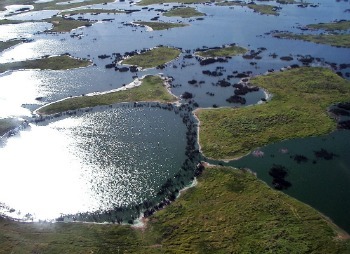
It is in flooded areas that grasses appear, while shrubs and palm trees grow in areas where flooding happens occasionally.
There are tropical forest species, in turn, that grow in areas where there is no flooding.
The area of wetland it comprises part of the states of Mato Grosso and Mato Grosso do Sul, reaching Paraguay.
pampa
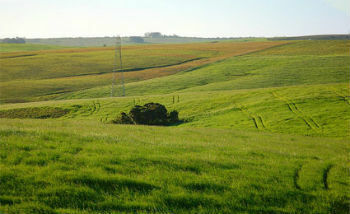
Found in the south of the country, the pampa is mainly formed by shrubs, small trees, grasses and creeping plants.
You Pampas present plant formations such as savanna, steppe and seasonal forests.
This vegetation appears in Brazil, exclusively in Rio Grande do Sul, due to the subtropical climate.
Cocais Forest

Considered a “transition forest”, it appears in humid equatorial and semi-arid equatorial climates. It can be seen between the Amazon forest and the caatinga.
That's where babassu trees are found, a typical tree in this area, and other large trees, such as açaí, buriti and carnaúba.
THE Cocais Forest it is located between the states of Maranhão, Piauí and Tocantins.
Araucaria Forest

Also called Araucaria Forest or Mixed Ombrophilous Forest where there is a great thermal amplitude.
In it arise several plant species, with a predominance of the Paraná pine, a tall tree that measures more than 30 meters. This results in the formation of a very dense forest.
Located in southern Brazil and parts of the state of São Paulo, the climate of Araucaria Forest it is subtropical.
Mangrove
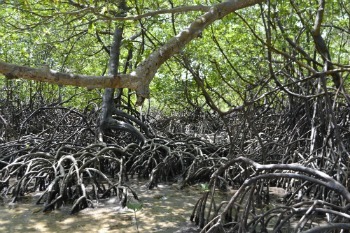
The vegetation of the mangrove it consists of halophilic plants, which comprise shrubs and plants adapted to the salinity of water and mud soil, and pneumatophores, which breathe through their roots above the water.
Mangroves have three main species: White mangrove, Red mangrove and Siriúba mangrove.
It is a type of coastal vegetation, which appears in marshy regions, and where the climate is tropical and subtropical.
Learn more about Brazilian biomes:
Read too:
- Vegetation Types
- Brazilian Biomes
- Brazil climates
- Hydrography of Brazil
- Brazil relief
- Brazilian territory
- Enem geography: subjects that fall the most

